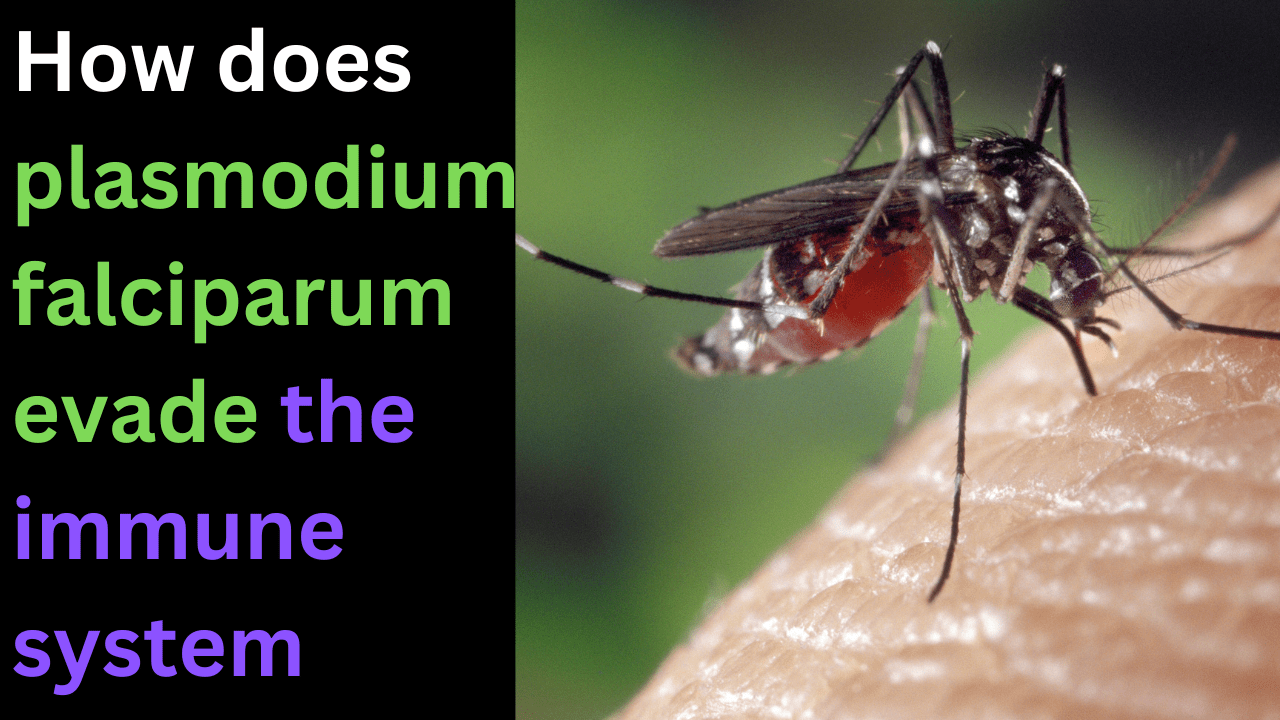Plasmodium falciparum, the parasite responsible for the most severe form of malaria, has evolved sophisticated mechanisms. These mechanisms allow it to invade the human immune system. These strategies allow it to survive and replicate in its host.
Here are the seven primary mechanisms that helps p.falciparum to evade the host immune system.
Antigenic Variation
- Var Gene Family: The parasite expresses a family of proteins. These proteins are known as PfEMP1 (Plasmodium falciparum Erythrocyte Membrane Protein 1). They are located on the surface of infected red blood cells.
- The PfEMP1 proteins are encoded by the var gene family, which consists of approximately 60 genes. The parasite can switch which gene is expressed, effectively altering the antigenic properties of the infected cell’s surface.
- This “antigenic variation” prevents the immune system from mounting an effective response. It stops the immune system from sustaining the response. Antibodies produced against one variant are ineffective against others.
Cytoadherence and Rosetting
- PfEMP1 proteins enable infected red blood cells to adhere to endothelial cells in blood vessels, a process called cytoadherence. This prevents infected cells from being cleared by the spleen, which is a major site of immune surveillance.
- Infected cells can adhere to uninfected red blood cells. They form clusters known as rosettes. These clusters further shield the parasite from immune detection.
Intracellular Lifestyle
- During most of its life cycle in the human host, P. falciparum resides within host cells:
- Liver Stage: After infection by a mosquito, the sporozoites invade liver cells, where they multiply shielded from immune surveillance.
- Blood Stage: Once in red blood cells, the parasite is hidden from immune cells. This occurs because red blood cells lack major histocompatibility complex (MHC) molecules. These molecules are required for presenting antigens to T cells.
Immune Modulation
- The parasite manipulates the host immune response to its advantage:
- Inhibition of Dendritic Cells: P. falciparum impairs the function of dendritic cells, key players in initiating adaptive immune responses.
- Suppression of T Cell Activation: It can alter signaling pathways to suppress the activation of T cells.
- Induction of Immunosuppressive Cytokines: The parasite promotes the production of immunosuppressive cytokines such as IL-10, which dampens the immune response.
Polymorphism in Surface Antigens
- Beyond PfEMP1, P. falciparum exhibits high genetic variability in other surface antigens, such as merozoite surface proteins (MSPs) and apical membrane antigens (AMAs). This genetic diversity makes it difficult for the immune system to target the parasite effectively.
Subversion of Immune Memory
Repeated infections with different strains of P. falciparum expose the immune system to a wide variety of antigens, leading to incomplete or non-sterilizing immunity. This phenomenon, combined with antigenic variation, allows for recurrent infections even in individuals with prior exposure.
Evasion of Humoral Immunity
- The parasite can reside in niches where antibody access is limited, like within red blood cells or the liver.
- Additionally, some strains of P. falciparum secrete enzymes that degrade antibodies or interfere with their function.
These evasion mechanisms highlight the complexity of the host-parasite interaction. They underscore the challenges in developing effective vaccines and treatments for malaria caused by P. falciparum.
